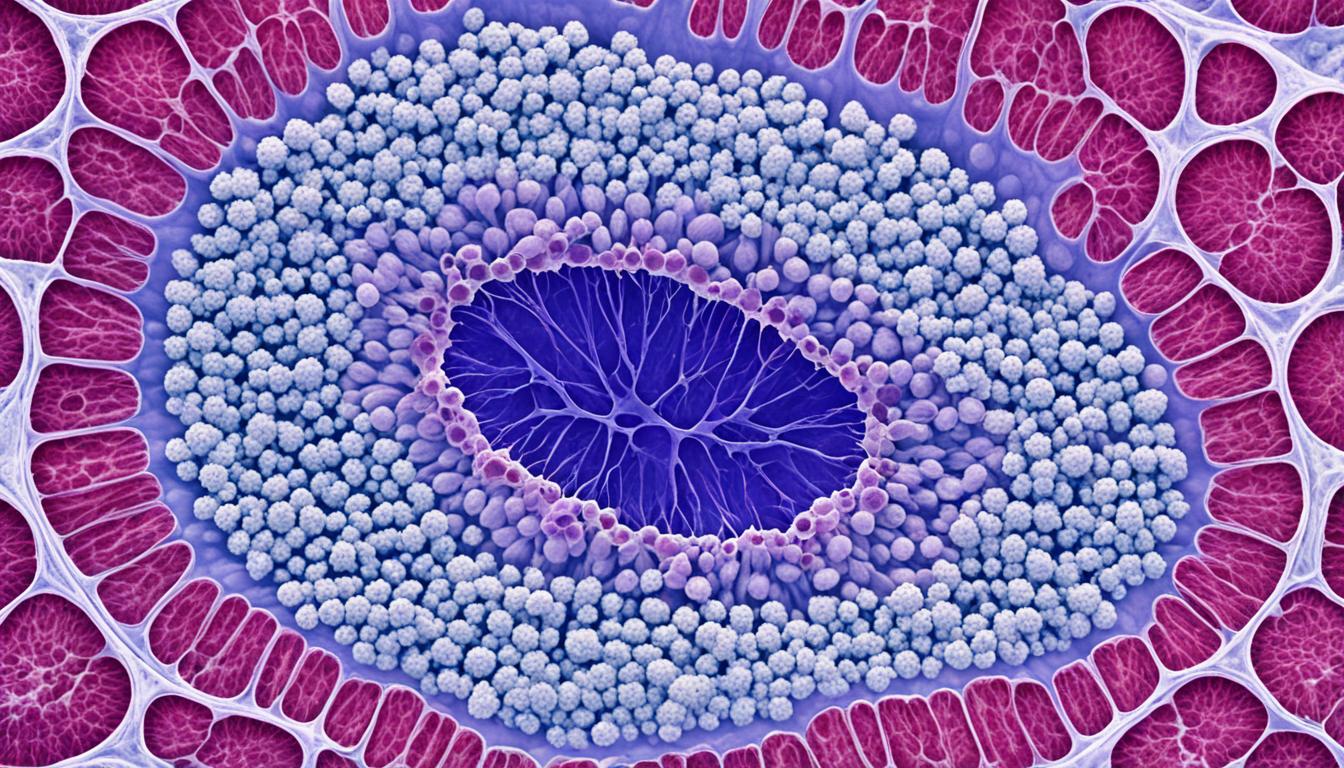Molluscum contagiosum, or ‘water warts’, is a skin problem caused by Molluscum contagiosum virus. It’s common in kids and spreads through contact. Symptoms show up as pink or red, 2-5mm spots in clusters on the skin.
This disease is usually not dangerous and may disappear on its own. But, if needed, stem cell therapy is an option in Thailand.
Key Takeaways:
- Molluscum contagiosum is a benign skin condition caused by the Molluscum contagiosum virus (MCV).
- The virus is spread through skin-to-skin contact.
- The main symptoms include small clusters of raised spots on the skin.
- Treatment is usually not necessary, but options such as stem cell therapy are available.
- Thailand offers stem cell therapy as a treatment option for Molluscum contagiosum.
Symptoms of Molluscum Contagiosum
Molluscum contagiosum, often called ‘water warts’ or ‘mollusca’, is known for its unique symptoms. It shows up as small, firm spots on the skin. These are called mollusca. They look like pearls, with a dimple in the center. The spots can be pink or red.
Mollusca are not painful, but they may itch. This can be bothersome, especially if you scratch them. But, scratching can make them spread. So, avoid scratching to keep others safe.
These spots can show up anywhere on your body. Children often get them on their face, neck, and arms. Adults might find them in their genital area or on their stomach and legs. But, each person could have a different experience with molluscum contagiosum.
| Key Symptoms of Molluscum Contagiosum | |
|---|---|
| Presentation | Small clusters of firm, raised spots known as mollusca |
| Shape | Round with a small dimple in the center |
| Color | Pink or red |
| Texture | Smooth and shiny, resembling pearls |
| Pain | Usually not painful, but can be itchy |
| Distribution | Children: face, neck, chest, arms, legs; Adults: genitals, anus, groin, buttocks, abdomen, thighs |
Causes and Risk Factors of Molluscum Contagiosum
Molluscum contagiosum is a skin disease caused by the Molluscum contagiosum virus. You can get the virus by touching an infected person or their stuff. This includes sharing towels or clothes and having sex.
If you’re close to someone with Molluscum contagiosum, you’re more likely to get it. Young kids, aged 1-10, are at risk due to their play habits. Living in hot, humid areas may also increase your chances.
If your immune system is weak, you have a higher risk. This includes those living with HIV or getting immune-suppressing treatments. Sports and swimming can also expose you to the virus.
Preventing the Spread of Molluscum Contagiosum
To lower your risk, avoid direct skin contact with anyone who has Molluscum. Don’t share clothes, towels, or personal items with infected people. Regular handwashing keeps you safe, as does not scratching Molluscum lesions.
If you’re sexually active, use protection like condoms. This lessens the chance of getting or spreading Molluscum. Following these steps reduces your risk.
If you think you have Molluscum contagiosum, see a doctor. They can confirm the diagnosis and suggest the right treatment.
Treatment and Diagnosis of Molluscum Contagiosum
A dermatologist diagnoses molluscum contagiosum by looking at the skin’s lesions. They might also suggest a skin biopsy or a molecular test to be sure. However, in many cases, it goes away on its own and doesn’t need treatment.
If you do want to treat it, there are several methods. These include cryotherapy (freezing), curettage (scraping), laser therapy, and using specific creams. Stem cell therapy is also an option, mainly found in Thailand.
Preventing its spread is key. Don’t pick or scratch the bumps, and keep clean. This way, you can help lessen the effects of molluscum contagiosum.

